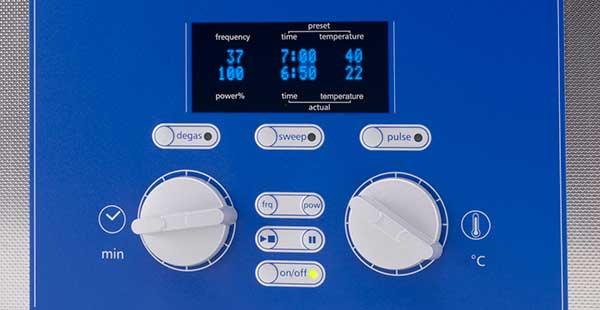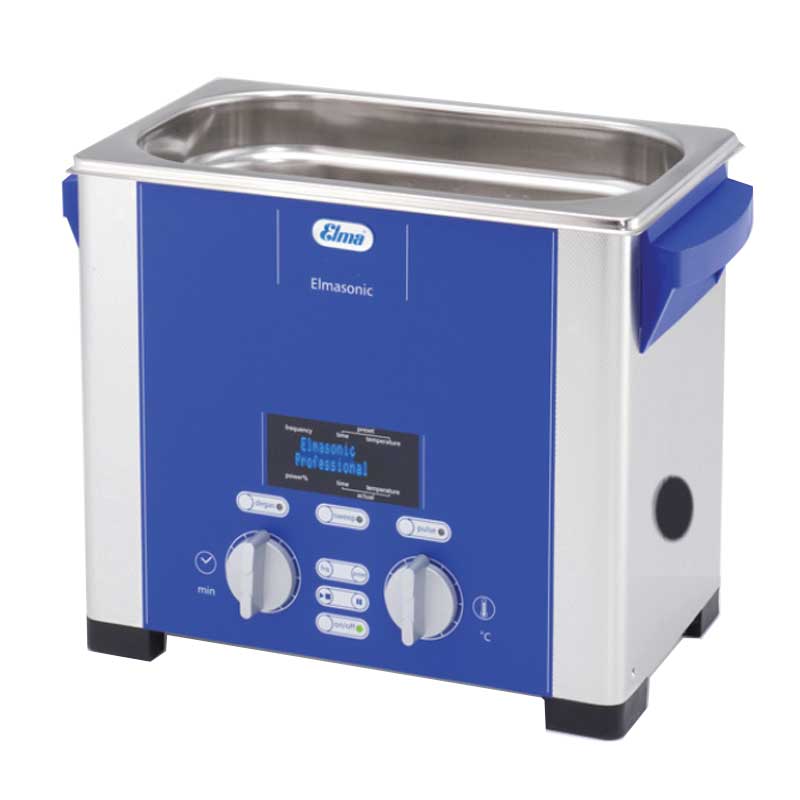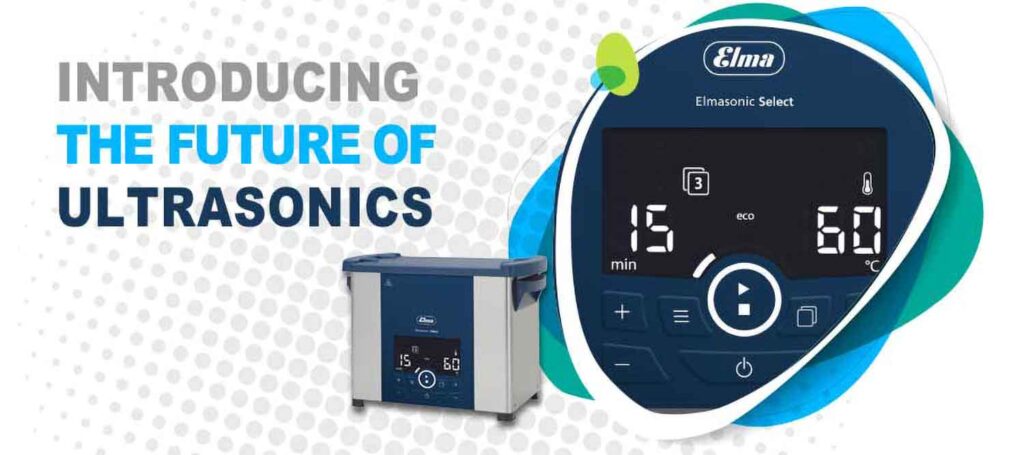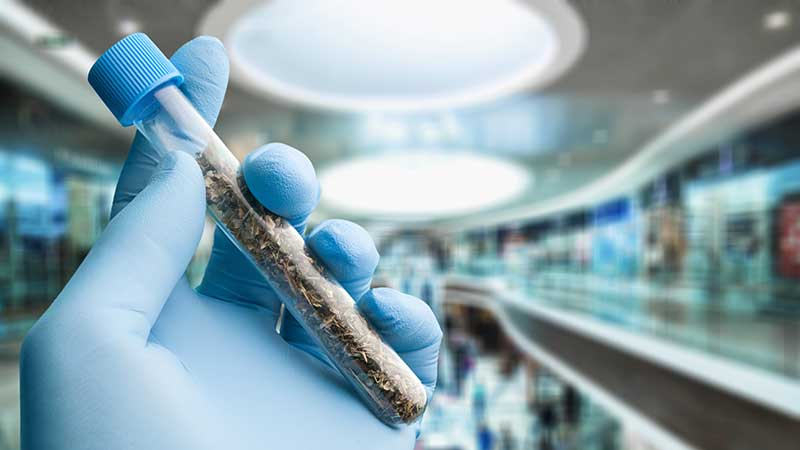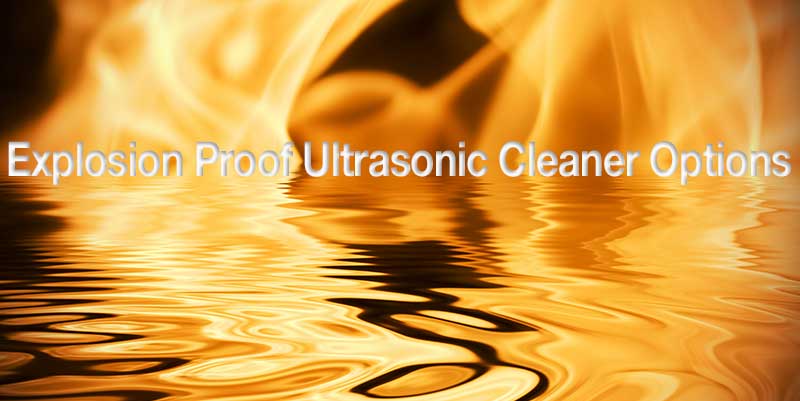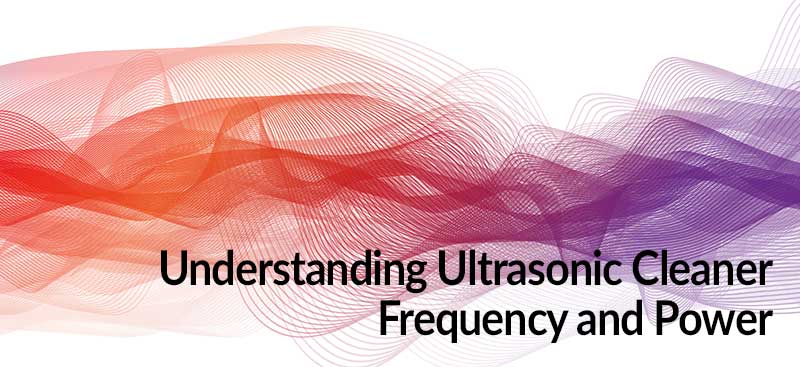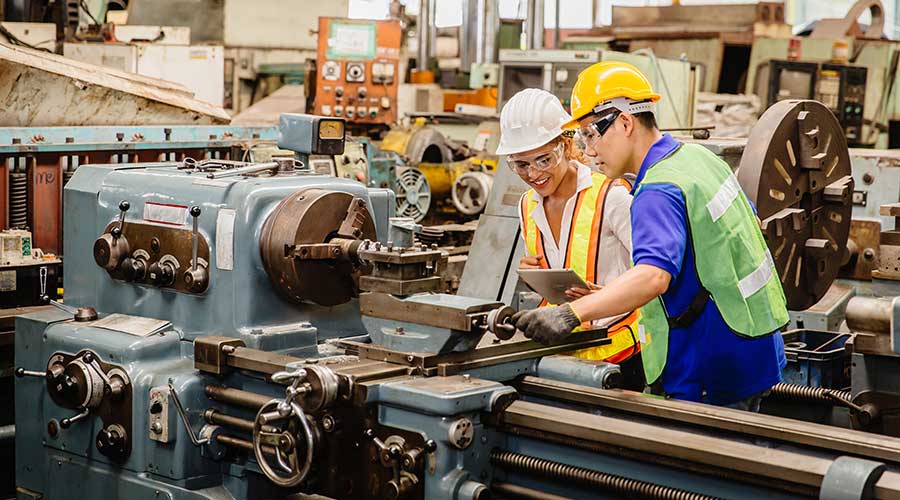Ultrasonic Cleaners
Lab Ultrasonic Cleaner Features Uniform Sonication
Uniform sonication, or perfect sound field distribution, a desirable feature for ultrasonic cleaners used in analytical and medical laboratories as well as other professional settings, is achieved in the multi-functional Elmasonic P30SE available from Tovatech. Uniform sonication assures users that instruments and lab samples in flasks or beakers receive “equal treatment” regardless of their position in the tank.
The Secret to Uniform Sonication
Elma researchers determined that the key impediment to uniform sonication is interference due to the tank drain duct found on most benchtop ultrasonic cleaners. This was visually demonstrated in a drain-equipped unit: cavitation in a beaker suspended on the drain side of the tank was not nearly as vigorous as in the beaker on the opposite side. Based on this the 0.75 gallon P30SE has no drain and demonstrates homogeneous sonication.*
A Highly Versatile Lab Ultrasonic Cleaner
The dual range 37/80 kHz frequency Elma … Read the rest
5 Key Points to Selecting the Correct Ultrasonic Cleaner Size
Ultrasonic parts cleaners are manufactured in a tremendous variety of sizes. By “size” we mean the dimensions and capacities of tanks in which ultrasonic parts cleaning is accomplished. For example the Elmasonic E Plus series is offered in 9 tank capacities from 0.25 to 7.5 gallons and the Select Series in 11 capacities from 0.7 to 23 gallons. Industrial-sized units such as SHIRACLEAN can hold 100 gallons or more. This post will help you select the correct ultrasonic parts cleaner size.
Five Points to Selecting your Ultrasonic Parts Cleaner Size
Here are the key points to consider:
- Parts you are cleaning
- Cleaning tank dimensions
- The importance of “working depth”
- The role of cleaning baskets
- Cleaning solution volume and service volume
1. What Parts are you Cleaning?
Ultrasonic parts cleaning has proved a very effective and economical way to remove all types of contaminants from nearly anything that can be safely … Read the rest
Introducing the Elmasonic Select Line: Programmable Cleaning, Five Ultrasonic Modes
Elmasonic Select ultrasonic cleaners available from Tovatech feature 5 ultrasonic modes to simplify task setting and supervision for parts cleaning and maintenance, sample prep, and solvent degassing plus up to 4 commonly used programs for quick call up and reproducible results.
- 5 ultrasonic modes for powerful, rapid, thorough, reproducible cleaning and mixing
- 3 cleaning cycle parameters: mode, temperature to 80⁰C/176⁰F, and timer to 6 hours
- Store up to 4 programs for quick call-up and reproducible results
- Brilliant digital display clearly shows all operating parameters
- Audio/visual signal at cycle completion
- 11 tank sizes with operating capacities from 0.7 to 24 gallons
Elmasonic Select Product Features
Customize your ultrasonic cleaning or sample prep projects by putting these features to work in your shop or laboratory:
| Sweep | For uniform cleaning via a slight ± variation in ultrasonic frequency |
| Pulse | Brief spikes in power to remove stubborn contaminants or for mixing and sample prep |
Ultrasonic Cleaning Preserves New and Old Vinyl Records
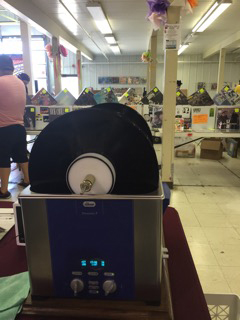
A Sound Way to Clean Vinyl Records
Why Audiophiles use Ultrasound to Maintain and Restore Fidelity
The Wall Street Journal reports LP record popularity surged in the U.S., selling 41.7 million units, up from 21.5 million in 2020. Sales of LPs nearly doubled in 2021, outselling CDs for the first time in 30 years. Those boxes of vintage vinyl in your attic or garage may also excite collectors willing to pay big bucks. “Collectors know the real vinyl money lies in original pressings and rare vinyl records,” according to an article in Work+Money.
Experts Explain: Ultrasonic Cleaners Maintain New and Restore Vintage Vinyl
Employing ultrasound to maintain new and restore vintage vinyl is accomplished using an ultrasonic cleaner equipped to quickly and safely handle the project.
Cleaning Tips for Vinyl Record Collectors
Gerry, a collector in Spring Hill, Florida, has 4500 LPs and 45s. “For maintaining (or restoring) this … Read the rest
Ultrasonic Cleaner for Dental Instruments
Using an ultrasonic cleaner for dental instruments is a recommend practice cited by professional organizations including the American Dental Association, the Food and Drug Administration and the CDC’sSummary of Infection Prevention Practices in Dental Settingsto remove contaminants from reusable dental instruments.
Clinics employ ultrasonic cleaners for dental instruments before sterilization to avoid heat “baking on” blood, tissue and other organic residues that cause infection problems. Dental instrument ultrasonic cleaning systems are also ideal for cleaning molds, implant hybrid prosthesis, and removing plaster and cement from bridgework.
Why Clinics Need an Ultrasonic Cleaner for Dental Instruments
Ultrasonic energy creates billions of minute vacuum bubbles in an ultrasonic cleaning bath that implode with tremendous force when they contact dental instruments.
The process, called cavitation, reaches into tiny cracks and crevices, quickly and safely blasting loose and carrying away contaminants on dental instrument surfaces. Dental instrument ultrasonic cleaners are faster, … Read the rest
Ultrasonic Energy Cleans Cannabis Equipment
According to Fortune Business Insights, the global cannabis market is projected to grow from $28.266 billion in 2021 to $197.74 billion in 2028 at a CAGR of 32.04% in forecast period, 2021-2028. These growth projections along with stringent regulations require the cannabis industry adopt proven methods to clean cannabis equipment. Ultrasonic energy is highly effective to remove gummy contaminants and other unwanted residues from cannabis processing glassware.
Cannabis Equipment Cleaning Challenges*
The cannabis distillation process can be called a “high-maintenance activity” because glass used in short path distillation is susceptible to being highly soiled with baked on and polymerized contaminants. The distillation process involves crude concentrates that are boiled until the desired components are distilled out, leaving behind unwanted residues.… Read the rest
Explosion Proof Ultrasonic Cleaner Options
Explosion-proof ultrasonic cleaners must be used when cleaning tasks call for the use of volatile solvents to achieve the desired results. See examples below. When low flash point flammable solvents are involved in an ultrasonic cleaning operation, a number of precautions are called for in addition to using an explosion-proof ultrasonic cleaner. This is because using these solvents creates what the NEC and NFPA term a hazardous location.
A flash point is the temperature at which a particular organic compound gives off sufficient vapor to ignite in air when given an ignition source. In view of this, selection of an ultrasonic cleaner must take into account that not only do volatile solvents evaporate, but the heat generated by the ultrasonic cleaning process accelerates solvent evaporation and vapor generation.… Read the rest
Ultrasonic Cleaner Frequency and Power
Selecting an ultrasonic cleaner for any cleaning and sample preparation operation requires careful consideration of many factors before making a purchasing decision. We offer useful guidelines in our post How to Pick the Best Ultrasonic Cleaner. This post focuses on two points in particular, frequency and power. Ultrasonic frequency is relatively easy to understand; understanding power is a bit more complicated. So let’s begin.
How to Specify Ultrasonic Frequency
Frequency is measured in thousands of cycles per second (kilohertz or kHz).
These frequencies are generated by transducers most commonly affixed to the bottom of the cleaning tank. Some ultrasonic units have transducers bonded to tank sides; others may have immersible transducers.
Wherever they are placed ultrasonic transducers are excited by the unit’s ultrasonic generator to produce millions of microscopic vacuum bubbles in the solution that implode on contact with parts being cleaned.
The implosions, called cavitation, remove contamination … Read the rest
Avoid Product Damage by Ultrasonic Waves
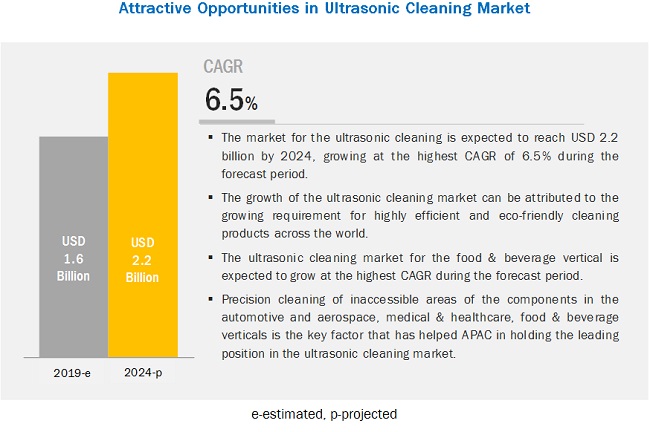
The worldwide acceptance of ultrasonic cleaning is confirmed by a MarketandMarkets report stating that it is expected to grow from USD 1.6 billion in 2019 to USD 2.2 billion by 2024, at a CAGR of 6.5% during the forecast period. That report describes reasons driving the growth rate while this post provides important tips on avoiding product damage by ultrasonic waves.
Ultrasonic Waves Described
Ultrasonic waves is another way of describing what is called cavitation action in an ultrasonic cleaner tank. Cavitation action results from the violent implosion of millions of microscopic bubbles every second.
These implosions create a temperature of 5000˚C (>9000˚F) and a jet of plasma impacting the objects being cleaned. It is cavitation action by ultrasonic waves that quickly strips away dirt and other contaminants from parts being cleaned.
Note that this action is exceedingly fast meaning it does not damage the parts. But over time it … Read the rest
Solvent Ultrasonic Cleaning Helps Porvair Filtration
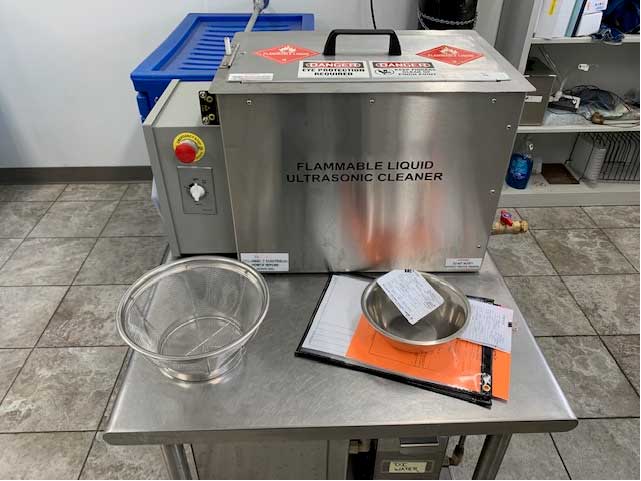
An explosion-proof ultrasonic cleaning system satisfies customers’ preferences for flammable solvents employed during initial cleaning processes for new and reconditioned stainless-steel filters, reports Jeff Bernier, Quality Manager at Porvair Filtration Group in Caribou, ME.
“Solvent ultrasonic cleaning falls into our passivation cycle as a means of improving the corrosion resistance of our 316L stainless steel filters by removing ferrous contaminants like free iron from surfaces, and restoring them to their original corrosion specifications,” Mr. Bernier explains, adding “many of our chromatography customers expect it.”
Solvent Ultrasonic Cleaning Replaces Aqueous Solutions
… Read the rest“Our explosion-proof ultrasonic cleaner allows us to safely use flammable solvents versus previously employed non-flammable aqueous solutions for initial cleaning,” Mr. Bernier says.
“Grade A isopropanol alcohol and pharmaceutical grade acetone are the preferred solvents. However, they require specially designed ultrasonic cleaners as well as compliance with strict safety standards.
“These include the National Electric
